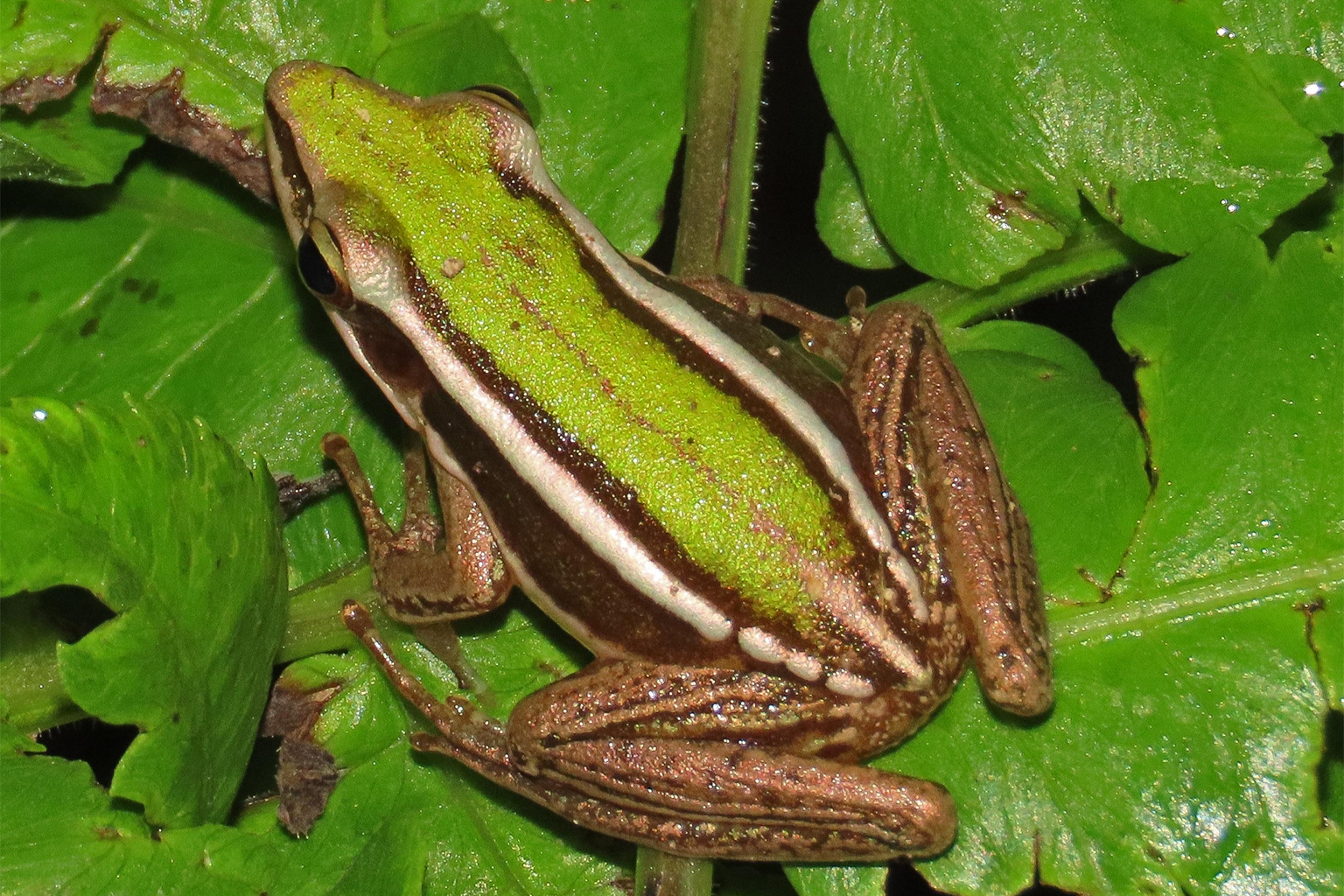- Researchers have found microplastics in 90% of frogs sampled from the Bengal Delta in Bangladesh.
- The finding raises concerns about the freshwater ecosystem health and rice cultivation, given that frogs are a key “natural insecticide” keeping pest numbers in check.
- The study adds to a growing body of literature on the prevalence of microplastic pollution in Bangladesh.
- Nearly a tenth of the 8,000 metric tons of trash generated daily in the country is plastic waste, for which there’s no proper disposal.
DHAKA — Studies on the hazards of microplastics have tended to focus on their presence in the food chain and risks to human health. A new study now shows they also pose a threat to the quality of freshwater environments by impacting a wide range of frog species.
The study of 27 frogs from nine species collected around the Bengal Delta in Bangladesh found a substantial presence of microplastics in the gastrointestinal tracts of 90% of them. Microplastic ingestion can cause severe health damage and even death, says the study, the first of its kind in the country.
Plastics are ubiquitous in Bangladesh, as in many other Global South countries, and tend to be disposed of directly into the environment, including dumped in rivers and other water bodies As they move downstream, they break down into increasingly smaller pieces, ending up as microplastics that animals like frogs ultimately eat.
“Ingestion of plastic damages the frog’s stomach and leads it to collapse. Frogs that have been exposed to plastic die as a result,” said study co-author Shafi Mohammad Tareq, a hydrobiogeochemist at Jahangirnagar University in Dhaka.

Biodiversity and agriculture under threat
Frogs are an essential component of a healthy wetlands ecosystem, protecting biodiversity and native ecological balance, and serving as an indicator of ecosystem health. In Bangladesh, they’re also essential for rice cultivation, serving as a natural pest control by feeding on the larvae of insects that would otherwise damage the crop.
But their existence has long been at threat from human-caused factors, including the overuse of fertilizers and pesticides in rice cultivation, plastic pollution, and loss of habitat and breeding grounds. The threats at one point including harvesting of the frogs so that they could be butchered and their legs exported as a delicacy. But Bangladesh banned this practice when it became apparent that declining frog numbers in rice-growing areas coincided with a drop in rice yields.
The worry is that this same cycle could be playing out again, this time with microplastics as the main culprit, Tareq said.
“Frogs play a role in crop protection and production by eating harmful pests and insects. That’s why frogs are also called ‘natural insecticides.’ So, we can say that the endangered frog directly threatens crop production,” he said.
Bangladesh is home to 47 species of frogs, of which nine are threatened and six near-threatened, according to the IUCN, the global wildlife conservation authority.
The study calls for planned actions to conserve frog populations and thereby protect the environment and ensure a safe food supply. It warns that when frog populations decline due to exposure to microplastics, the ecosystem will be severely disrupted.
A 2022 study analyzing the ecological risk of microplastics on aquatic ecosystems found an abundance of the pollutant in surface water and underlying sediments of several lakes and peripheral rivers of Dhaka. The Bangladeshi capital is one of the world’s most populous cities, generating much of the 8,000 metric tons of waste produced daily across the country. Nearly a tenth of this solid waste is plastic, for which there’s no proper disposal.
The study, on which Tareq was also a co-author, found microplastics present in water and sediment samples from across Dhaka and surrounding areas, at levels higher than in the same type of ecology in Shanghai, the largest urban area in China.
Banner image: A Bengal whipping frog (Polypedates taeniatus). Image by avrajjal via iNaturalist (CC BY-NC 4.0).
Microplastics plus organic pollutants equals 10 times the toxicity, study finds
Citations:
Shetu, M. H., Parvin, F., & Tareq, S. M. (2023). Identifying the presence of microplastics in frogs from the largest delta of the world. Environmental Advances, 11, 100355. doi:10.1016/j.envadv.2023.100355
Parvin, F., Hassan, M. A., & Tareq, S. M. (2022). Risk assessment of microplastic pollution in urban lakes and peripheral rivers of Dhaka, Bangladesh. Journal of Hazardous Materials Advances, 8, 100187. doi:10.1016/j.hazadv.2022.100187
Feedback: Use this form to send a message to the author of this post. If you want to post a public comment, you can do that at the bottom of the page.
